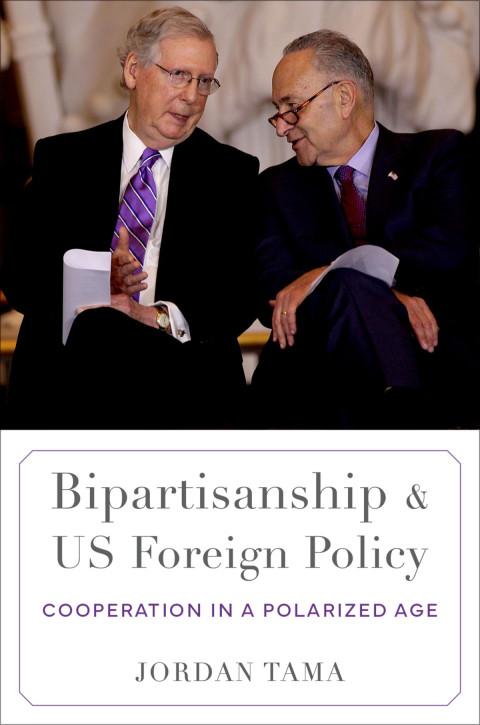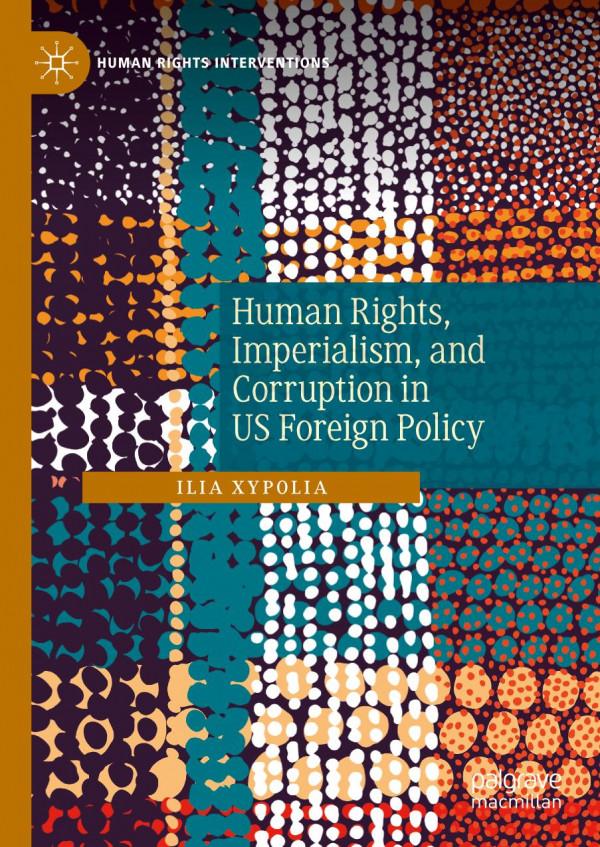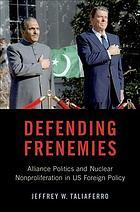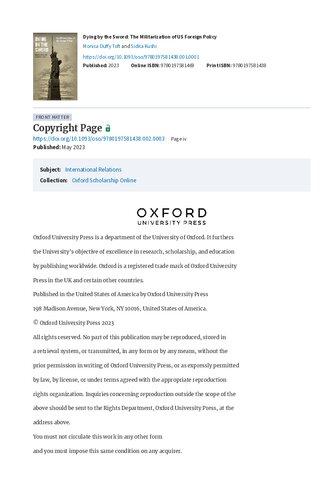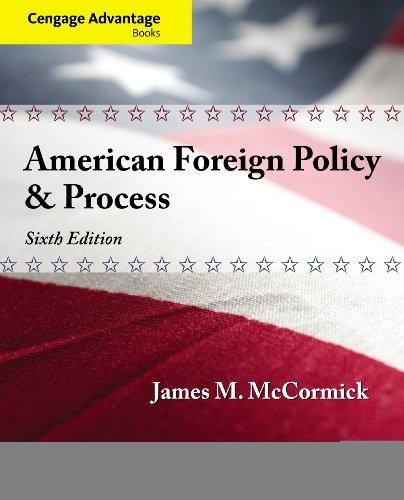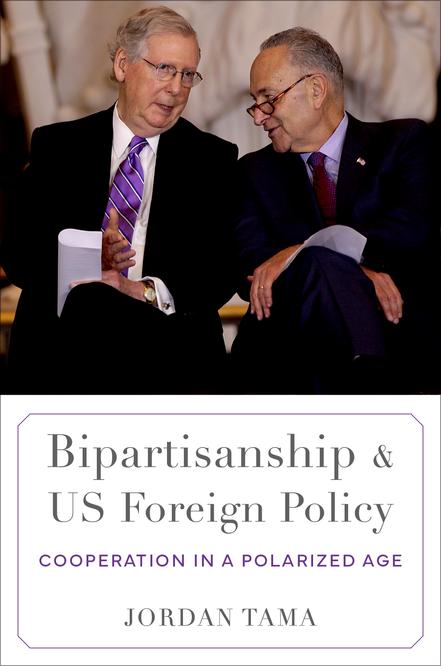Acknowledgments
Te seeds for this book were planted more than two decades ago during my work as a speechwriter for former US Representative Lee Hamilton. Lee was one of the most infuential foreign policy voices in Congress during the latter part of the 20th century and had become the head of the Woodrow Wilson Center, a research institution in Washington, DC, afer retiring from Congress. One of my assignments for him was to draw on his insights and experience to draf a series of speeches that he delivered on the foreign policy role of Congress, which we later published as a book. Tis project was the beginning of my education in the domestic politics of US foreign policy. In Lee, I observed a leader who always placed the national interest above partisan considerations. He was highly respected across the aisle, which made him not only a very efective lawmaker but also an ideal leader of nonpartisan institutions, including the Wilson Center and the 9/11 Commission, which investigated the September 11, 2001, terrorist attacks on the United States.
Some years later, I served as an American Political Science Association Congressional Fellow on the Tom Lantos Human Rights Commission in the House of Representatives. In that role, I worked for another highly efective foreign policy leader: US Representative Jim McGovern, the co-chairman of the commission. Jim is a progressive Democrat who is deeply committed to fundamental values of human rights and skillfully forges politically diverse coalitions to promote and defend those ideals. He has partnered with Democrats and Republicans across the ideological spectrum to advance an array of important foreign policy legislation. My work for him on a bill he introduced known as the Magnitsky Act, which imposed sanctions on Russian ofcials who committed major human rights violations and was enacted into law with strong bipartisan support in Congress, led me to decide to write a book on the nature of foreign policy bipartisanship today.
I’m grateful to a number of institutions for generous support that facilitated my work on the book. A residential fellowship from the Wilson Center enabled me to return to the institution in a scholarly capacity, begin intensive research for the project, and get early feedback on it. A grant from the Social Science Research Council allowed me to further advance the research and
receive more helpful suggestions. Support from the School of International Service at American University made it possible for me to present drafs of parts of the project at conferences of the American Political Science Association and International Studies Association, as well as to receive feedback from other scholars on a draf of the entire manuscript at a book workshop. I also thank the institutions and workshops that invited me to present papers or ideas from the project, including the DC IR Workshop, the Finnish Institute of International Afairs, the National Capital Area Political Science Association American Politics Workshop, Kaiserslautern University, Partnership for a Secure America, Southern Methodist University, the University of Heidelberg, the University of Maryland at College Park, and the University of Quebec at Montreal.
Many people gave me valuable guidance, feedback, and suggestions as I worked on the book. Jim Goldgeier, Miles Kahler, David Karol, Doug Kriner, Frances Lee, and Sarah Snyder read a full draf of the book and provided extensive and insightful comments on it at my book workshop. Numerous other scholars also generously gave their time to discuss the project with me or provide helpful feedback on draf papers or chapters from it. I thank, in particular, David Auerswald, Florian Böller, Philip Brenner, Sarah Burns, Shannon Carcelli, Ralph Carter, Audrey Kurth Cronin, Charles-Philippe David, Chris Deering, Colin Dueck, Ben Fordham, Gordon Friedrichs, Glenn Hastedt, Bob Hathaway, Ryan Hendrickson, Will Howell, Bruce Jentleson, Maya Kandel, Josh Kertzer, Ron Krebs, Anna Kronlund, Jim Lebovic, Dov Levin, Robert Litwak, Yonatan Lupu, Sarah Maxey, Kelly McHugh, Dumitru Minzarari, Shoon Murray, Randy Newnham, Autumn Perkey, Stefano Recchia, Josh Rovner, Elizabeth Saunders, Jim Scott, George Shambaugh, Jim Turber, Matt Timmerman, Wolfgang Wagner, and Don Wolfensberger. Te book is a much better product as a result of the willingness of all of these scholars to ofer their input.
I was fortunate to have some terrifc research assistants during the project. I’m grateful to Harrison Brooks, James Bryan, Margaret Carlough, Gabriel Exposito, Tomas Flaherty, and Balazs Martonfy for their excellent work. At Oxford University Press, I thank David McBride for his interest in the project and for shepherding it through the review process. I also thank the anonymous peer reviewers who provided thoughtful and constructive comments on the manuscript.
When researching the political dynamics of contemporary policy debates, it is invaluable to learn from the experiences and insights of people who
were directly involved in those debates. I’m indebted to the more than 100 members of Congress, congressional staf, executive branch ofcials, and advocates and experts outside government who agreed to be interviewed by me as part of my research for the book. Several dozen of these interview subjects are named in the book in connection with my use of quotes or information from the interviews. Many other interview subjects requested anonymity so that they could speak with me candidly, and I therefore cannot acknowledge them by name. But all of them enhanced my understanding of important dimensions of the foreign policy debates discussed in the book.
My completion of this book would not have been possible without the constant support and warm encouragement of my wonderful wife Julia. My delightful children Amos and Jesse made the years during which I worked on it tremendously joyful and meaningful. Looking back further, I’m deeply grateful to my parents, grandparents, and aunts for giving me a strong foundation for intellectual endeavors and a fulflling life. I dedicate this book to my father, who has always been a rock of support for me and from whom I have learned so much.
1 Te persistence and forms of bipartisanship
During the fall and winter of 2019–2020, Washington, DC, appeared entirely consumed by partisan division as the US Congress considered whether to hold President Donald Trump to account for pressuring the government of Ukraine to conduct investigations that could beneft him politically. Te impeachment proceedings in the House of Representatives and trial in the Senate were marked by intensely partisan rhetoric. Republicans accused Democrats of engaging in a witch hunt, while Democrats charged that Republicans were placing loyalty to Trump above loyalty to the country.1 In a series of House and Senate votes on whether to impeach and convict Trump for abuse of power and obstruction of justice, a total of just four out of 535 members of Congress crossed party lines.2 A Washington Post article noted that the main takeaway from the impeachment process was that “partisanship reigns” in Washington.3
Yet even as Democratic and Republican lawmakers battled one another over Trump’s impeachment, they cooperated on a variety of substantive foreign policy issues. While the impeachment proceedings and trial were taking place, large bipartisan majorities in the House and Senate approved legislation adopting a major trade agreement negotiated by Trump with Mexico and Canada,4 mandating sanctions on ofcials responsible for human rights violations in Hong Kong,5 creating a space force as the sixth branch of the US military,6 prohibiting the US executive branch from withdrawing from NATO,7 and rejecting a Trump proposal to slash US spending on diplomatic and foreign aid programs.8 On some of these issues, such as the trade agreement and space force, the bipartisan congressional majorities backed Trump’s positions. On other issues, such as NATO and international afairs spending, legislators in both parties joined together to constrain or challenge the president.
Tese examples show that the full reality of contemporary American politics is more nuanced than what many headlines and high-profle partisan
battles suggest. Yes, partisan polarization has increased dramatically in recent decades, and Democrats and Republicans routinely fght tooth-and-nail for political advantage. But this polarization coexists with bipartisanship that remains surprisingly common. Such bipartisanship continues to exist in both domestic and international issues, but it remains most prevalent in foreign afairs.
However, bipartisanship is not necessarily what you think it is. Whereas the classic conception of bipartisanship involves Democrats and Republicans joining together in unity, bipartisanship is not always synonymous with consensus in Washington. Instead, bipartisan cooperation in Congress can take several forms, from bipartisan support of the president, which I call propresidential bipartisanship; to bipartisan opposition to the president, which I call anti-presidential bipartisanship; to bipartisan coalitions generated by intra-party divisions, or cross-partisanship. 9 Each of these alignments characterizes important contemporary foreign policy debates, even as American politics has grown increasingly polarized on the whole. Put another way, Democrats and Republicans lack overarching consensus about foreign policy, but they nevertheless work together on international issues in a variety of ways.
In this book, I document the extent to which bipartisanship persists in foreign policy and show that it remains more common in international rather than domestic issues. I also explain why bipartisan coalitions still develop in many international issues and why foreign policy bipartisanship ofen coincides with intra-party or inter-branch divisions.
Understanding these political dynamics is important because they can shape the conduct and efectiveness of US foreign policy. While the president is the leading actor in foreign policy, Congress also possesses critical international responsibilities, from the appropriation of funds for defense and foreign aid to the approval of international treaties. When Democrats and Republicans are polarized on an issue, Congress will tend to be incapable of taking the steps needed to address it. Polarization also can make it more difcult for presidents to send clear signals to other countries and can lead US policy to shif sharply when a president from one party is succeeded by a president from the other party. Tese pathologies, in turn, can reduce the credibility of US commitments and damage America’s global standing.10
By contrast, bipartisanship tends to strengthen US foreign policy, but different varieties of bipartisanship generate diferent efects. Pro-presidential bipartisanship can facilitate robust action to address global challenges, make US policies more durable, and bolster the credibility of US commitments.
Anti-presidential bipartisanship can be harmful in stymieing worthy presidential initiatives or benefcial in blocking unwise unilateral presidential moves. Cross-partisanship, for its part, can generate either gridlock or legislative action, depending on how the intra-party divisions stack up. Importantly, none of these forms of bipartisanship always results in “better” policy than polarization—even pro-presidential bipartisanship can involve support for a bad policy—but the ways that Democrats and Republicans line up have a large impact on the US role in the world.
Polarization in American politics
Partisan polarization in American politics has risen steadily over the past several decades to reach record levels. As recently as the 1960s and 1970s, more than a quarter of US representatives and senators were best described as conservative Democrats or liberal Republicans.11 In a pattern of behavior that may seem hard to imagine today, many of these lawmakers voted more ofen with colleagues in the other party than with colleagues in their own party. Furthermore, many major policy issues that now sharply split Democrats and Republicans lacked such fxed divisions. Consider that President Richard Nixon, a Republican, backed the creation of the Environmental Protection Agency and proposed establishing a sweeping program of national health insurance.12
Since then, largely due to a massive realignment of the parties in the wake of the civil rights era, polarization has steadily increased, and the positions of Democratic and Republican elected ofcials have become far more distinct.13 When representatives and senators are placed based on their voting records on a number line in which 1 represents the most liberal position and 1 represents the most conservative position, the average gap between the median Democratic lawmaker and median Republican lawmaker rose from .60 during the Congress that operated during 1979–1980 to .88 during the 2019–2020 Congress.14 At the same time, the share of congressional roll call votes in which a majority of Democrats voted against a majority of Republicans increased from 38% to 70% in the House and from 46% to 64% in the Senate from 1980 to 2020.15 Today, the voting record of every Democratic senator and representative falls to the lef of the voting record of every Republican senator and representative, and the two party caucuses are more polarized than at any other time since the creation of the Republican Party in the 1850s.16
Foreign policy debates have not been immune to this polarization.17 Following an early Cold War period characterized by relatively strong bipartisan support for an internationalist and anti-communist foreign policy, partisan divisions became more common on international issues afer the failed US military intervention in Vietnam.18 Some studies also fnd that polarization on international issues increased afer the end of the Cold War,19 or they identify a more gradual, long-term trend of growing polarization on overseas matters.20 Moreover, throughout the modern period, partisan motivations have regularly shaped the foreign policy behavior of elected ofcials, even on questions of war and peace.21
At the same time, polarization extends well beyond Washington to the American electorate. Te average gap separating the share of the Democratic public and share of the Republican public who approve the president’s performance increased from 27% under Jimmy Carter to 81% under Donald Trump.22 In the 2020 election, 95% of Democrats voted for Biden, while 94% of Republicans voted for Trump.23
Even more troubling, many Republican and Democratic voters now have deeply ingrained hostile feelings toward members of the other party, a phenomenon known as “afective polarization,” or negative partisanship.24 When asked in a 2019 public opinion survey to rate their feelings about members of the other party on a zero to 100 thermometer scale, in which zero represents the coldest reading and 100 the warmest reading, 79% of Democrats and 83% of Republicans gave members of the other party a rating of 49 or below.25 A 2022 public opinion poll further found that political disagreements had damaged the friendships or family relationships of one in fve Americans.26 Democrats and Republicans even discriminate against each other more than they discriminate against members of another race.27 Such patterns point to powerful social polarization based on partisan identities, fueled by biases and emotion rather than rational thought.28 Political scientist Liliana Mason observes: “Partisanship can now be thought of as a mega identity.”29
Given these troubling trends, the dominant perspective on contemporary American politics centers on its polarization. Te leaders of an American Political Science Association task force on negotiating agreement in politics write: “Today politics is dominated by intense party polarization and limited agreement among elected representatives on even basic facts about policy problems and solutions.”30 Political analyst Ezra Klein comments that the “master story” of American politics today is “the logic of polarization.”31 Newspaper headlines regularly proclaim that bipartisanship is “dead.”32
In a similar vein, scholars of US foreign policy observe that polarization now characterizes the political landscape on international issues. Charles Kupchan and Peter Trubowitz note: “Te domestic consensus that long supported US engagement abroad has come apart in the face of mounting partisan discord and a deepening rif between urban and rural Americans.”33 Daniel Drezner writes: “Foreign policy discourse was the last preserve of bipartisanship, but political polarization has irradiated that marketplace of ideas.”34 In a 2018 survey, foreign policy practitioners and experts rated polarization as the most critical threat to the United States.35
Yet some recent research ofers grounds for hope about the prospects for bipartisan cooperation during this highly polarized era. Political scientists James Curry and Frances Lee fnd that when Congress enacts landmark laws today, the majority party still does so by negotiating with the minority party rather than by ramming partisan bills through the legislature.36 Other work shows that it remains common for Democrats and Republicans to join together in cosponsoring legislation.37 In foreign policy specifcally, some scholars fnd that bipartisan support for liberal internationalism remains relatively robust,38 the Democratic and Republican party platforms continue to embrace deep international engagement,39 and distinctions between the two parties on international issues are rather muted overall.40
In this book, I build on this and other research by developing a new conceptualization of political alignments that goes beyond the binary distinction between bipartisanship and polarization. I also investigate the frequency of these alignments in important policy debates and examine factors that enable or hinder diferent alignments. My fndings show that bipartisanship occurs more ofen today than conventional wisdom indicates and suggest that some analysts underestimate the prevalence of bipartisanship because they adopt an overly narrow defnition of it. I ofer, too, novel understandings of factors that contribute to polarization or diferent forms of bipartisanship, highlighting the key roles of ideological commitments, advocacy groups, and institutional incentives in shaping how elected ofcials line up.
Types of political alignments
My conceptualization of political alignments takes into account the extent of inter-party, intra-party, and inter-branch agreement or disagreement on issues. Binary defnitions of polarization and bipartisanship typically defne
polarization as instances where most members of the two parties oppose each other and defne bipartisanship as instances where most members of the two parties line up together. While these defnitions ofer useful simplicity, they fail to capture some important nuances. One such nuance concerns the degree to which parties are internally divided on issues. For instance, a situation where 95% of Democrats vote against 95% of Republicans has a markedly diferent character than a situation where 60% of Democrats vote against 60% of Republicans. By the same token, the nature of a bipartisan coalition is quite diferent when nearly all Democrats and Republicans agree with each other than when just a bare majority of the members of each party do so. To capture such diferences, I distinguish between cases of strong bipartisanship or strong polarization, in which intra-party division is minimal, and cross-partisanship, in which a substantial share of elected ofcials in one or both parties opposes their own party’s dominant position.
A second nuance concerns whether Democrats and Republicans in Congress are supporting or opposing the president. To capture this nuance, I distinguish between pro-presidential bipartisanship and antipresidential bipartisanship, with the former term referring to instances in which majorities of both parties in Congress support the president and the latter term describing instances in which majorities of both parties in Congress are at odds with the president. In foreign policy, it is particularly important to take into account this inter-branch dimension of bipartisanship given the president’s preeminent role in shaping the United States’ role in the world.
Each of these political alignments has been common in US foreign policy debates. In the remainder of this section, I illustrate the historical prevalence of four of them: pro-presidential bipartisanship, anti-presidential bipartisanship, strong polarization, and cross-partisanship.
Pro-presidential bipartisanship
I begin with pro-presidential bipartisanship because it represents the standard image of bipartisanship, associated with the notion, which dates back to a comment by Daniel Webster during the War of 1812, that partisan divisions should “cease at the water’s edge.”41 A century later, President William Howard Taf made the same point, arguing, “In its foreign afairs, the United States should present to the world a united front.”42 During the
Cold War, US leaders expressed this perspective so ofen that the idea that politics should stop at the water’s edge became a cliché. While presidents have advanced this view in an efort to persuade opposition party lawmakers to support them on foreign policy, opposition party lawmakers have sometimes used the same language in an efort to persuade presidents to give them a say in national security decision-making.43
Pro-presidential bipartisanship characterized some of the most important US foreign policy decisions of the early Cold War years, including congressional approval of Harry Truman’s proposals to provide aid to Europe under the Marshall Plan and join newly established NATO.44 However, even the early Cold War featured some fercely partisan debates over foreign policy. For instance, congressional Republicans attacked Harry Truman for “losing China” afer the communist revolution in that country, and congressional Democrats charged that Dwight Eisenhower allowed the Soviet Union to acquire more military power than the United States.45 Overall, the era between World War II and the Vietnam War featured broad US consensus in support of an internationalist and anti-communist foreign policy, coupled with intense disputes on international issues where presidents were politically vulnerable.46
In other words, the United States has never experienced a period of consistent bipartisan congressional support for the president. Nevertheless, pro-presidential bipartisanship has marked a variety of important foreign policy debates. Since the 1990s, the Senate has approved six waves of NATO enlargement—bringing a total of 16 countries into the alliance—by voice vote or with at least three-quarters of Democrats and Republicans voting for the expansion.47 Afer the September 11, 2001, terrorist attacks, Congress authorized the use of military force against the perpetrators of the attacks with just a single member of Congress voting in opposition.48 In 2003, large majorities of Democrats and Republicans voted to establish the President’s Emergency Plan for AIDS Relief, a major program designed to combat HIV/ AIDS and other infectious diseases in Africa.49 Te approval by Congress of the United States-Mexico-Canada Agreement (USMCA), the major trade deal negotiated by Trump to replace the North American Free Trade Agreement (NAFTA), also involved strong pro-presidential bipartisanship.50 Most recently, the vast majority of Democrats and Republicans joined together in support of the provision of large amounts of military aid to Ukraine and the imposition of major sanctions on Russia by the Biden administration following Russia’s 2022 invasion of Ukraine.51
Anti-presidential bipartisanship
Anti-presidential bipartisanship has received less attention from observers of American politics, but it has also been prevalent in US foreign policy.52 In 1950, the House and Senate voted overwhelmingly to override Harry Truman’s veto of the Internal Security Act, which gave the Justice Department new authority to deport aliens on security grounds, and established the Subversive Activities Control Board to investigate claims of communist subversion.53 Two decades later, as bipartisan congressional dissatisfaction with the Vietnam War intensifed, majorities of Democrats and Republicans voted to restrict US military activities in Southeast Asia. In 1973, a majority of Senate Republicans and nearly half of House Republicans joined most Democrats in voting to override Richard Nixon’s veto of the War Powers Resolution, which set limits on the president’s authority to take the country into war.54
Anti-presidential bipartisanship has been especially common in the area of economic sanctions. In 1986, majorities of Democrats and Republicans in the House and Senate voted to override Ronald Reagan’s veto of legislation imposing sanctions on the apartheid-era government of South Africa.55 Congress has also approved many other bipartisan sanctions bills—targeting countries ranging from Cuba to China—that were resisted by presidents who worried that the sanctions would antagonize foreign governments or make it more difcult for the United States to advance international priorities.56
Under Obama, anti-presidential bipartisanship characterized some important terrorism debates. In 2016, large majorities in both parties voted to override a veto by Obama of legislation allowing US courts to hear cases against foreign ofcials charged with culpability for acts of terrorism committed on US soil, which Obama worried would lead Saudi Arabia and other countries to retaliate against the United States.57 Congress also blocked Obama from transferring detainees in Guantánamo Bay to facilities on the US mainland, thereby preventing him from fulflling his pledge to close the Guantánamo detention facility.58
Under Trump, anti-presidential bipartisanship characterized an array of foreign policy issues, including relations with Russia, NATO policy, spending on diplomacy and foreign aid, and the US military presence on the Korean Peninsula.59 In most of these cases, Democratic and Republican lawmakers joined together to counter or prevent steps by Trump that would turn the
United States away from liberal internationalist values or commitments. In a refection of the intensity of some of these inter-branch clashes under Trump, eight of the 10 bills that he vetoed concerned foreign policy.60
Strong polarization
Still other foreign policy debates have been marked by strong polarization. One of the most important cases of foreign policy polarization involved the Senate’s consideration of the Treaty of Versailles, which established the League of Nations, in 1919. Only one Republican senator joined 37 Democrats in voting for the treaty in the form submitted to Congress by President Woodrow Wilson, while just a handful of Democrats joined the vast majority of Republicans in a key pair of votes on reservations to the treaty.61 During the Clinton administration, just four Senate Republicans joined 44 Senate Democrats in voting to approve the Comprehensive Test Ban Treaty, resulting in the treaty falling well short of the two-thirds support needed for approval.62 Congress also became strongly polarized during George W. Bush’s presidency over the Iraq war. At the nadir of the war, all but 14 House Democrats voted for legislation setting a deadline for withdrawing US troops from Iraq, while all but two House Republicans voted against the legislation.63
Congress has been quite polarized on climate change and nuclear diplomacy with Iran too. In a key congressional vote on climate change in 2009, 95% of House Republicans voted against a Democratic proposal to mandate reductions in emissions of greenhouse gases in various sectors of the economy.64 Tirteen years later, not a single Democrat or Republican crossed party lines when voting on landmark legislation backed by Joe Biden designed to support a US transition to clean energy.65 On the nuclear issue, as I discuss in Chapter 7, every Republican senator voted in 2015 against the Joint Comprehensive Plan of Action (JCPOA) negotiated by Obama with Iran, which lifed sanctions on Iran in return for Iran’s acceptance of constraints on its nuclear activities, while 40 out of 44 Senate Democrats voted for it.66 Recent Congresses have also been sharply divided along partisan lines on foreign policy investigations that had the potential to tarnish the president or other party leaders—on issues ranging from the 2012 killing of four Americans in Benghazi, Libya, to the impeachment of Trump over his handling of Ukraine policy.67
Cross-partisanship
Cross-partisanship merits its own consideration. On issues marked by strong bipartisanship in Congress, intra-party division is minimal. Similarly, intraparty division is low when nearly all Democrats line up against nearly all Republicans. But on issues marked neither by strong bipartisanship nor by strong polarization, cross-party coalitions become central to congressional activity. For the empirical sections of the book, I defne cross-partisanship as instances where more than 10% of the members of a party oppose their party’s dominant position. Cross-partisanship is not mutually exclusive with pro-presidential or anti-presidential bipartisanship, but it is worth highlighting this alignment as a distinct category because the existence of substantial intra-party division ofen afects the ability of Congress to approve legislation or exercise infuence in other ways.
Cross-partisanship has been especially common in recent decades in votes on trade agreements, with a substantial minority of Democrats ofen joining a majority of Republicans in support of trade liberalization.68 In 1993, 40% of House Democrats and 49% of Senate Democrats joined 75% of House Republicans and 77% of Senate Republicans to approve NAFTA.69 In 2015, as I discuss in Chapter 8, 15% of House Democrats and 30% of Senate Democrats joined 79% of House Republicans and 90% of Senate Republicans in voting to give the president trade promotion authority and thereby facilitate negotiation by Obama of the Trans-Pacifc Partnership.70 Te overwhelming bipartisan approval of the USMCA in late 2019 and early 2020 represents an exception to the pattern of limited Democratic support for recent trade agreements.
Cross-partisan votes have also marked other important international agreements. In a 1978 Senate vote on the Panama Canal Treaties, which turned control of the canal over to the government of Panama, 52 Democrats and 16 Republicans provided the two-thirds majority needed for approval of the treaty negotiated by Jimmy Carter, while 10 Democrats and 22 Republicans voted against it.71 Tree decades later, 13 of 39 Senate Republicans joined all Senate Democrats in voting for the New START nuclear arms control agreement negotiated by Obama with Russia.72
Many debates over military intervention—in places ranging from Bosnia and Kosovo during the 1990s to Libya and Syria following the Arab Spring— have also generated intra-party divisions. For instance, in a key 2011 House vote during the US intervention in Libya, 19% of Democrats joined 38% of Republicans in voting to restrict funding for the military operation.73 Two
years later, as I detail in Chapter 4, both parties were internally divided over whether to use the military to enforce a red line set by Obama regarding the use of chemical weapons by the government of Syria.
Why foreign policy bipartisanship persists
So, why does bipartisanship persist in foreign policy during a highly polarized era, and why does bipartisan cooperation on international issues regularly take multiple forms? Tese questions are especially worthy of investigation given that there ofen exist major obstacles to bipartisanship. In particular, the incentives for elected ofcials to engage in partisan behavior can be quite powerful. In recent decades, small margins have tended to separate the two parties in presidential election vote totals and congressional seats, placing control of the levers of power in Washington up for grabs nearly every time voters go to the polls. Faced with the prospect of gaining or losing so much power in each election, elected ofcials are strongly incentivized to do everything they can to make their own party look good and make the opposing party look bad. Te results are ofen strong feelings of teamsmanship within each party and approaches of no-holds-barred warfare between the parties.74
Yet there are countervailing forces that sometimes lead elected ofcials to act in bipartisan ways. Some of the motivations for elected ofcials to engage in bipartisanship are not specifc to foreign policy. Legislating in the US system of government is no easy task. A bill must be approved by the House, approved by the Senate (where a supermajority of 60 votes is ofen needed for passage), and signed by the president in order to become law. If the president vetoes a bill, it will only become law if two-thirds of the members of the House and Senate agree to override the veto. Given these realities, some support from both parties is usually needed to enact legislation. Tis means that individual members of Congress and the leadership of the parties have a strong incentive to seek bipartisan backing if they wish to advance their legislative priorities.75 Tis incentive is ofen bolstered by an electoral motivation, in that it can be benefcial politically to members of Congress and the parties as a whole to show voters that they are solving public problems.76
In foreign policy specifcally, national security crises and international threats can also be sources of bipartisanship. Here, too, an electoral motivation can be important. During perilous times, the public may rally around the fag and expect elected representatives in both parties to put partisan concerns aside.77 Consider that in the immediate afermath of the September
11, 2001, attacks, 90% of the American public approved of President George W. Bush’s job performance.78 In such a context, challenging the president on a national security issue can be politically risky for members of Congress, while supporting the president can be politically advantageous for them. Te result is likely to be pro-presidential bipartisanship, as occurred when Democrats and Republicans banded together to authorize Bush to use military force against the perpetrators of the 9/11 attacks. In addition, even during less tumultuous periods, bipartisanship may sometimes occur because the president and many legislators recognize that international engagement is necessary to protect US security in the face of various global challenges.79
While these factors explain many cases of bipartisanship, they do not account well for the multiple forms of bipartisanship. For instance, the incentive of members of Congress to reach across the aisle in order to be successful legislatively or show constituents that they are solving public problems does not explain well the prevalence of cross-partisanship, which ofen makes legislating more difcult. Similarly, if foreign policy bipartisanship is motivated by a shared desire to rally around the fag or protect US security, one would not expect to see both parties in Congress at odds with the president. National security crises, for their part, represent the exception more than the rule in contemporary American politics. Even afer 9/11, the president’s popularity quickly returned to more normal levels.
Other factors fll in these important gaps, helping explain why some degree of bipartisanship marks many foreign policy debates even in the absence of a crisis, as well as why bipartisan cooperation is ofen not synonymous with unity. In an argument that I develop in greater detail in Chapter 3, I highlight three key contributors to political alignments among elected ofcials in policy debates: (1) the ideological landscape associated with the debate, (2) the advocacy landscape associated with the debate, and (3) the difering incentives and prerogatives of lawmakers and the president.80
Te limits of ideology
Te limits of liberal and conservative ideology provide one part of the story. Bipartisan behavior by elected ofcials is common in foreign policy in part because the ideological landscape—among both policy elites and voters—is still not consistently polarized on international issues. Te views
of lawmakers are shaped by a foreign policy ecosystem that includes experts and other elite professionals in think tanks and the media. At the same time, on salient issues, members of Congress need to be responsive to the attitudes of their constituents. When liberal or conservative ideology leads the views of policy elites or voters on an issue to divide along lef-right lines, members of Congress will be likely to follow their lead, particularly since legislators may open themselves up to a primary challenge if they do not hew to their party’s ideological orthodoxy. By contrast, if an issue does not break down along lef-right lines among policy elites or the mass public, the views of elected ofcials will tend not to be polarized and lawmakers will have more political leeway to cooperate across party lines.
Whereas large gaps separate the views of liberal and conservative elites and voters on many domestic issues, their opinions are less consistently distinct on major foreign policy issues.81 Although conservatives typically place more value than liberals on military power and attribute less importance than liberals to cooperation with other countries, positions in many foreign policy debates do not map onto a one-dimensional, lef-right ideological spectrum.82 On such issues, Republican and Democratic elected ofcials have greater freedom to cooperate with one another. At the same time, since many international issues are not salient to voters, lawmakers have the fexibility to follow their own compass in many foreign policy debates, facilitating cross-partisanship. In these ways, ideas infuence the behavior of members of Congress through both electoral pressures and the principled beliefs of lawmakers.
Tis ideological fuidity in many areas of foreign policy helps explain how Donald Trump could become the Republican standard-bearer in 2016, even though his stances on international issues ranging from Russia and NATO to trade and US military involvement in the Middle East departed from the views of most Republican leaders.83 It is much harder to imagine someone becoming the Republican nominee for president today while espousing views on core domestic issues, such as taxes, abortion, or government regulation of the economy, that deviate sharply from the Republican Party’s standard positions.
Te role of advocacy groups
My account of bipartisanship also difers from most other analyses of polarization and bipartisanship by attributing greater importance to advocacy
groups. Although it is well-known that interest groups have considerable infuence on policymaking, much of the literature on polarization and bipartisanship gives little attention to the role of outside groups in pushing elected ofcials together or apart. Yet whether advocacy groups are themselves split along partisan lines, working together in a politically diverse coalition, or inactive on an issue can greatly infuence how elected ofcials line up.84
In domestic afairs, most major advocacy groups, from Planned Parenthood to the National Rife Association, have a strong pro-Democratic or pro-Republican orientation, making them forces for polarization. By contrast, advocacy groups that lobby the government on foreign policy—which include ethnic constituencies, defense contractors, and values-based nongovernmental organizations—are less one-sided on the whole in their campaign contributions and lobbying.85 As a result, whether they represent mass constituencies or elite interests, foreign policy advocacy groups ofen foster bipartisan action by lawmakers.
In addition, there are some areas of foreign policy in which powerful advocacy groups typically do not play a major role.86 For example, outside advocacy has been relatively unimportant in many recent debates regarding whether the United States should intervene militarily in countries experiencing civil war or brutal repression. In such cases, elected ofcials ofen have considerable freedom to reach across the aisle. Te upshot is that it is less common on international than on domestic issues for groups to pressure elected ofcials to resist compromising with their colleagues in the other party.
Te ideological and advocacy landscapes further help explain why political alignments on foreign policy take a variety of forms. Pro-presidential bipartisanship is more likely if the president’s position on an issue is compatible with liberal and conservative perspectives or if important advocacy groups linked to both parties share the president’s position. Anti-presidential bipartisanship is more likely if the president’s position is out of sync with liberal and conservative outlooks or if infuential groups tied to both parties oppose it. Strong polarization is more likely if an issue features a clear lef-right ideological divide or if groups with partisan orientations are advocating on opposite sides of it. Cross-partisanship typically occurs if competing policy positions cannot be mapped on a lef-right ideological spectrum or if partyafliated groups are split or uncommitted on the issue.
Te infuence of institutional incentives
I also bring inter-branch dynamics more directly into the understanding of polarization and bipartisanship by considering how diferences in the incentives and prerogatives of lawmakers and the president generate antipresidential bipartisanship. To the extent the literature on congressional polarization has considered the relationship between Congress and the president, this has usually been to explain how party identity and positions of the president infuence the positions of legislators. For instance, studies have shown that legislators in the president’s party are more likely than ones in the opposition party to support presidential positions, and presidents fuel stronger polarization in Congress when they make an issue a top priority.87 But scholars have given less attention to instances where Democrats and Republicans in Congress join together to challenge the president.88 Understanding this phenomenon requires consideration of the difering electoral incentives and institutional prerogatives of lawmakers and the president, which my account brings to the fore.
Since presidents are elected by the entire American population and are held accountable by voters for national welfare, they have a strong electoral motivation to pursue policies that advance overall national interests.89 By contrast, legislators are not generally held accountable for the outcomes of policy decisions, giving them more political leeway to adopt positions that refect their personal values or resonate with domestic constituencies.90 Tis diference makes lawmakers in both parties more likely than the president to place principle before pragmatism when adopting foreign policy positions.
In addition, since presidents are responsible for diplomacy and the execution of foreign policy, they tend to oppose legislative mandates that might limit their diplomatic fexibility or antagonize governments with which they seek to cooperate. Lawmakers, for their part, sometimes seek to protect congressional foreign policy prerogatives by constraining presidential discretion or unilateralism. Tese difering institutional perspectives can foster interbranch confict in areas including sanctions, treaties, and military action. To be sure, many members of Congress tend to acquiesce in, rather than oppose, the unilateral exercise of presidential power. But, as I show in the remainder of the book, bipartisan congressional eforts to challenge the president occur regularly.
